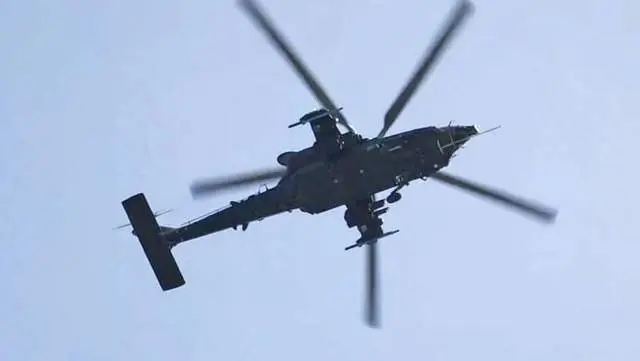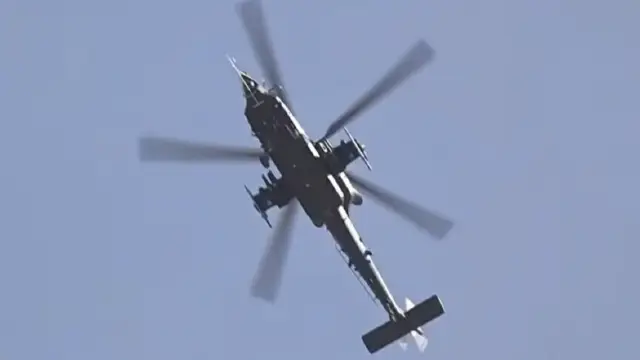Armed helicopters, known as “killers in the treetops,” have been a sought-after combat platform for various countries since the Cold War era due to their effective ability to strike armored vehicles and fortified positions on the ground. China is no exception. Since the 1990s, China has developed multiple armed helicopters, with the most famous being the WZ-10. According to foreign media reports, this helicopter has produced over 200 units and has not only equipped the People’s Liberation Army’s (PLA) Army Aviation Corps and airborne troops but has also been exported to Pakistan, playing a significant role in the PLA’s arsenal. However, newly exposed photos reveal the quiet emergence of a new generation of heavy-duty armed helicopters in China, raising questions as to why a new model is being developed despite the existence of the WZ-10.
According to a March 22 report by the American “War Zone” website, internet photos show a previously unseen new type of armed helicopter that has garnered significant attention from Western observers. From the images, this helicopter appears considerably large, seemingly modified from the Z-20 utility helicopter, especially resembling the Z-20 at the rear, and equipped with a more comprehensive self-defense suite. Compared to the slender fuselage of the WZ-10, the new armed helicopter appears larger, with a predicted change to a more common tandem-seat configuration for the crew compartment.
American media suggests that China’s new armed helicopter is positioned similarly to the American AH-64 “Apache” armed helicopter. This helicopter is reportedly in the 10-ton class, similar to the “Apache,” whereas the WZ-10 is only in the 6-ton class. This implies that the Z-21 can carry more fuel and ammunition while also being able to equip better protective armor and electronic reconnaissance payloads, significantly enhancing its overall combat capabilities.
According to unconfirmed reports cited by American media, this helicopter will be named the Z-21 and will utilize the same power and rotor systems as the Z-20, greatly reducing the development difficulty. As it adopts mature technologies from the Z-20 and WZ-10, it is expected that the Z-21 will be developed and delivered to the military within two to three years.
Regarding the PLA’s new armed helicopter, American media is surprised that it is reportedly developed based on the Z-20, as Americans have long considered the Z-20 to be a “knockoff” of the UH-60 Black Hawk, which is primarily a utility helicopter for transport missions. However, the Chinese have managed to take it a step further by modifying the Z-20 into a high-performance heavy-duty armed helicopter, surpassing the Americans in this aspect, leaving American media with mixed feelings.
American media suggests that the reason for using the Z-20 as the basis for development is because its technology is already mature. Rather than starting from scratch to develop a new heavy-duty armed helicopter platform, modifying the Z-20 directly requires much less time. This has led American media to detect a dangerous signal, indicating that the urgency of the PLA’s development is due to the perceived approaching conflict, hence the desire to obtain a more capable heavy-duty armed helicopter in the shortest time possible.
American media believes that the development of the Z-21 is closely linked to the potential Taiwan Strait conflict. According to senior US military officials, 2027 is speculated to be the “year of attacking Taiwan.” Compared to the WZ-10, the Z-21 has improved range and payload capacity, enabling it to conduct cross-strait raids directly and be carried by aircraft carriers or amphibious assault ships, executing “rear attacks” in the eastern waters of Taiwan.
Furthermore, the Z-21 will also have significant utility in the China-India border region, where it can compete with India’s “Apache” helicopters. Even in the South China Sea region, the Z-21 can be deployed to island airstrips to cover the surrounding waters. The emergence of the Z-21 has filled the gap in China’s heavy-duty armed helicopter capabilities, enhancing its ability to safeguard national security once again, which understandably leaves American media feeling bitter.

